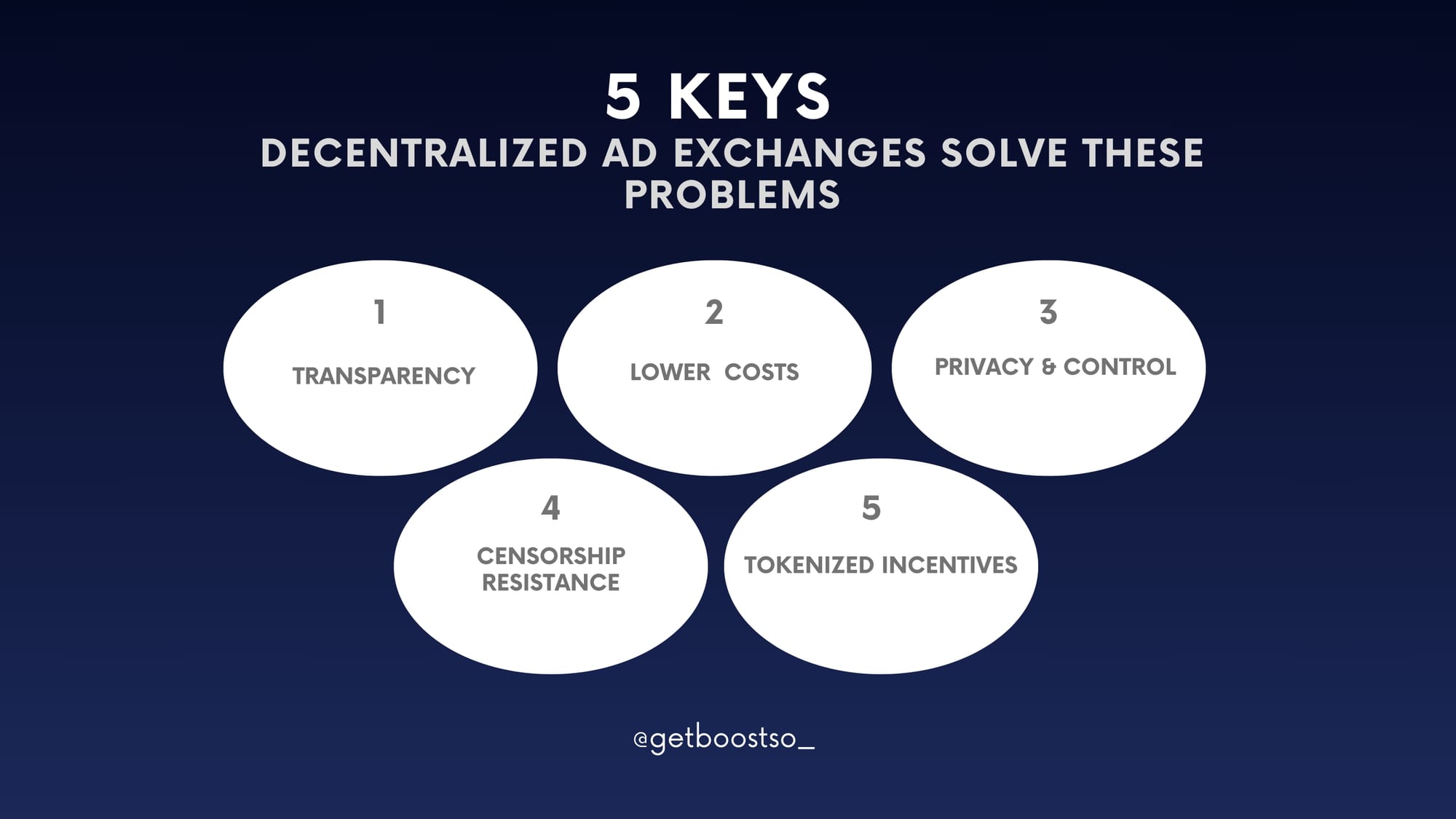Why Web3 Projects Need Decentralized Ad Exchanges for Growth

Decentralized ad exchanges power Web3 marketing growth. Discover how these privacy-focused platforms cut costs, boost transparency, and supercharge crypto user acquisition.
The Downside of Traditional Advertising
Traditional Web2 advertising channels pose challenges for blockchain projects. They are controlled by a few giants (Google, Meta, etc.) that can ban or restrict crypto ads. These platforms also involve multiple intermediaries, leading to opaque fee structures and significant wasted spend. Meanwhile, user data is heavily tracked and sold with little transparency. The result is censorship, high fees, and privacy issues that limit growth for Web3 projects.
- Centralization & Censorship: A few platforms dominate online ads and often block Web3 content (Example - Google/Facebook banning crypto ads). This leaves blockchain projects unable to reach broad audiences.
- High Fees & Hidden Costs: Multiple middlemen (networks, brokers) take large cuts of ad spend. Up to 30–35% of a budget can disappear in fees , reducing campaign impact.
- Data Privacy Concerns: Traditional ads rely on personal data. Platforms harvest and sell user data without full consent, leading to breaches and user distrust.
- Opaque Reporting: Web2 ad networks provide limited visibility into ad spend and performance, making it hard to verify results or detect fraud.
How Decentralized Ad Exchanges Solve These Problems
Decentralized ad exchanges, built on blockchain, tackle these issues head-on. They connect advertisers and publishers via smart contracts, cutting out middlemen and logging every transaction on a public ledger. Key advantages include:

- Transparency: Every ad impression and click is recorded on-chain. Advertisers can see exactly where money is spent, drastically reducing fraud and hidden fees .
- Lower Costs: Without intermediaries, decentralized platforms charge minimal fees. Many report fees as low as 1–2% of spend, versus 15–35% on Web2 networks .
- Privacy & Control: Users retain ownership of their data. They choose what to share (or nothing at all). Some networks use cryptography (like zero-knowledge proofs) to target ads without compromising privacy .
- Tokenized Incentives: Users earn crypto or tokens for engaging with ads. Instead of passive banners, some platforms reward actions like viewing or clicking, aligning user incentives with advertisers’ goals .
- Censorship Resistance: No single company can ban ads. Decentralized exchanges can’t arbitrarily block content, so Web3 projects remain reachable even if traditional networks restrict crypto advertising.
Growth Benefits for Web3 Projects
Using decentralized ad exchanges can turbocharge growth for blockchain companies. Key benefits include:
- Lower Acquisition Cost: Decentralized ads charge tiny fees (as low as 1–2%), so more budget goes into finding users. With blockchain-based targeting, projects can attract crypto audiences more efficiently .
- Higher ROI: Transparency and low overhead mean ad dollars are put to work effectively. Decentralized advertising drastically reduces waste and boosts return-on-investment .
- Stronger Engagement: Rewarding users builds loyalty. For example, Brave’s ad model pays users in BAT tokens for opting into ads . Platforms like Adshares similarly let users earn tokens for viewing ads. These user-centric models drive deeper engagement and retention.
- Privacy-Focused Branding: Privacy-respecting ads build trust. By offering ads that respect user privacy, projects can stand out and align with Web3 values .
- Strategic Edge: Decentralized ads fit core blockchain growth strategies. They maximize ROI, build brand trust, and give projects a competitive advantage in the Web3 space .
Conclusion
Decentralized ad exchanges align with Web3 values transparency, user control, and censorship-resistance while solving traditional marketing headaches . By cutting out middlemen, slashing fees, and protecting privacy, these platforms make crypto user acquisition more cost-effective and scalable . Embracing privacy-focused, blockchain-native advertising can be a game-changer for growth. Web3 startups and marketers should explore decentralized ad networks now to capture new users and stay ahead of the curve .
